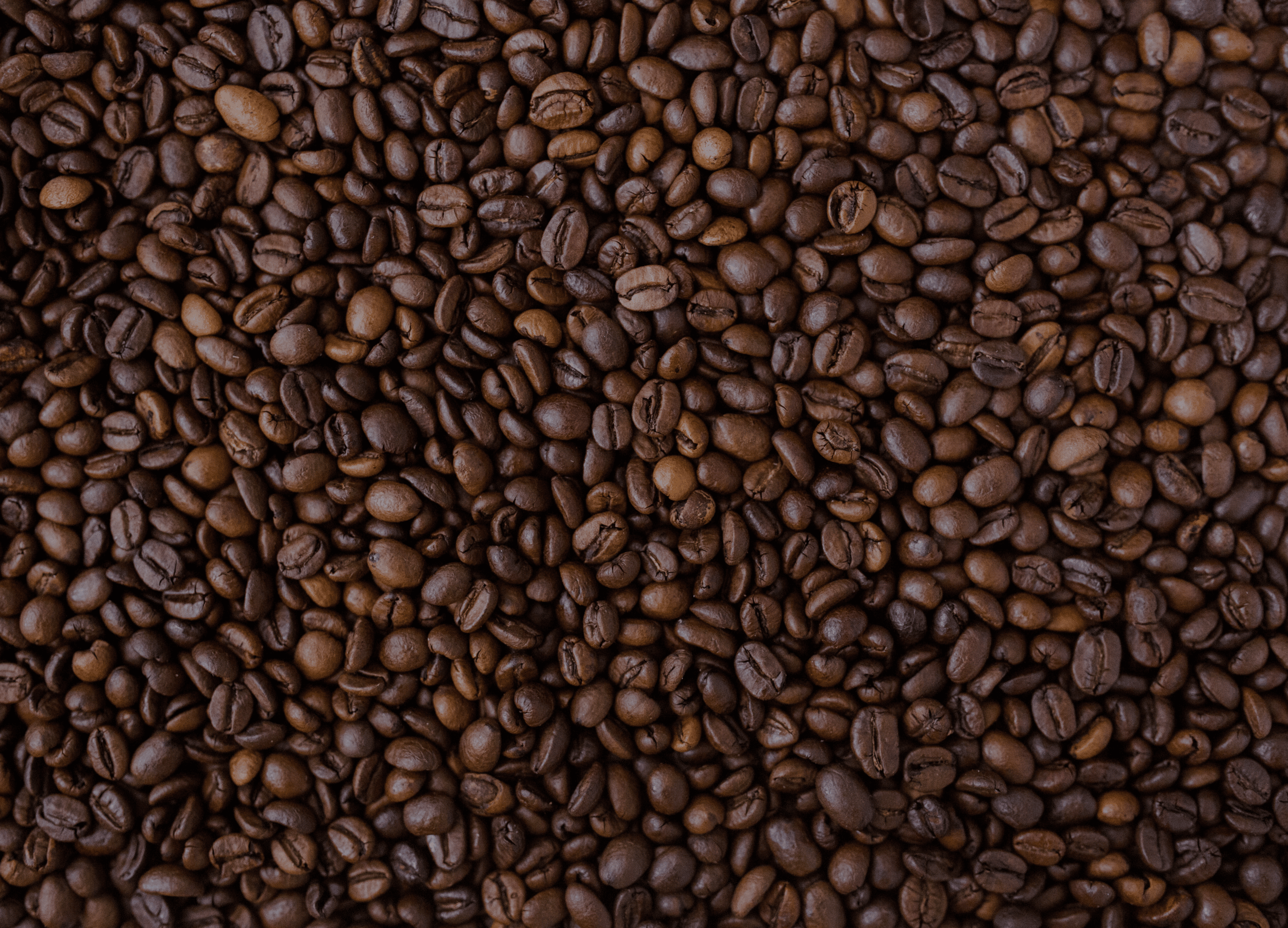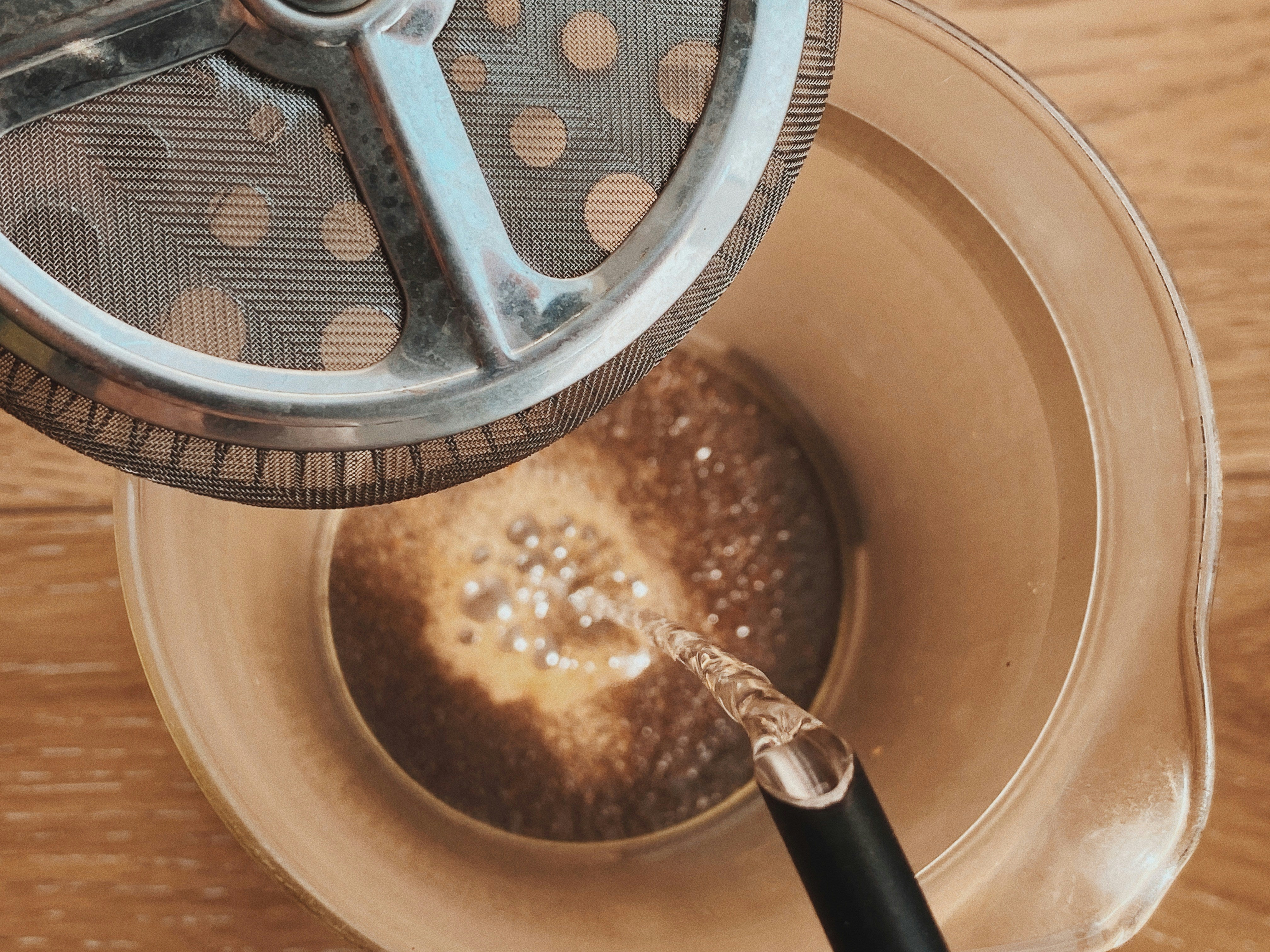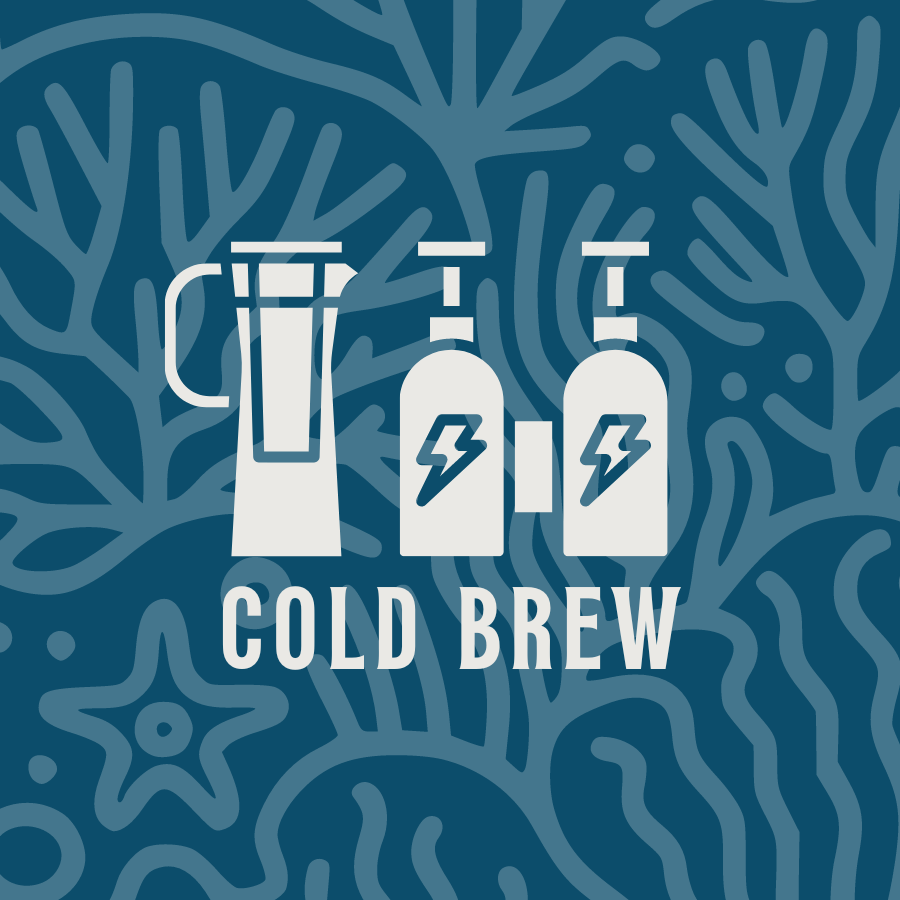✦ Brew French Press Like a Pro ✦
The French Press Lowdown
The French press is one of the simplest and most satisfying ways to brew coffee. With just a few tools and a bit of care, you can unlock bold, balanced flavors and turn your daily brew into a rewarding ritual—all from the comfort of your home.
French Press Fundamentals
Equipment
- French press (8-cup or your preferred size)
- Kettle
- Scale
- Timer
- Stirring spoon or paddle
- Mug
OPTIONAL:
- Burr grinder (if grinding whole beans)
Brew Ratio
- Mild: 1:18 coffee-to-water ratio
- Average: 1:16 coffee-to-water ratio
- Strong: 1:14 coffee-to-water ratio
- Robust: 1:12 coffee-to-water ratio
NOTE: When it comes to water, 1 milliliter (mL) = 1 gram (g)—so measuring by volume or weight will give you the same result!
Grind Size
- Ideal Grind: Coarse ground (similar to sea salt)
- Too fine a grind can lead to over-extraction & sludge!
Water Temp
- Ideal Range: 195°F to 205°F (90.5°C to 96°C)
- Let water sit 30 seconds after boiling to reach proper temp

Step #1
Heat & Prep
A warm French press and the right water temp create a stable environment for extraction and better flavor.
Substeps:
- PREHEAT THE FRENCH PRESS: Pour hot water into the French press and swirl it around for 10–15 seconds. This keeps the glass warm during brewing and helps maintain a consistent extraction temperature. Discard the water before brewing.
- BOIL & COOL WATER: Bring water to a full boil, then remove from heat and let sit for 30 seconds. This brings the temperature to the optimal 195°F–205°F range.
- GATHER TOOLS: Prepare your scale, stirring spoon, timer, and freshly roasted coffee. Set everything nearby so you're not scrambling during the brew.
Useful Tips:
- Preheating also reduces the risk of thermal shock to the glass, which can lead to cracking over time.
- Warm your mug too—it keeps your coffee hotter for longer.
- Use a gooseneck kettle for more controlled pouring.
- Avoid using distilled water—it lacks the minerals that help extract flavor.
Relevant FAQs
Why preheat the French press?
It keeps your brewing temperature stable, which helps with even extraction and better flavor.
Can I skip letting the water cool?
It’s best not to—boiling water can scald the coffee and create bitter flavors.
What kind of water is best?
Filtered water is ideal. Tap water with a clean, neutral taste is fine too, but avoid distilled or heavily chlorinated water.

Step #2
Dose & Grind
The right amount and grind of coffee ensures your brew is flavorful and free from bitterness or grit.
Substeps:
- MEASURE YOUR COFFEE: Use a digital scale to weigh your coffee based on your chosen brew ratio. For one 12oz mug, 30g of coffee to 450g of water (1:15) is a good place to start.
- GRIND BEANS (IF APPLICABLE): If you're grinding at home, use a burr grinder set to a coarse setting. The texture should resemble sea salt. If using pre-ground coffee, ensure it’s labeled for French press.
- TRANSFER TO BREWER: Add your ground coffee to the bottom of the preheated French press. Shake gently to level the grounds.
Useful Tips:
- A consistent grind is key—burr grinders are far superior to blade grinders.
- Too fine a grind can clog the mesh filter and make plunging difficult.
- Store your coffee beans in an airtight container away from heat and light.
- Try not to use overly flavored or oily beans—they can coat the mesh filter and affect flavor.
Relevant FAQs
What happens if the grind is too fine?
You’ll likely get a bitter, muddy brew with too many fines in your cup.
Can I use pre-ground coffee?
Yes, just make sure it’s coarse enough for French press brewing.
Do I need to measure by weight?
Measuring by weight gives you far more consistency than scoops, which can vary wildly.

Step #3
Bloom & Stir
This stage lets your coffee "bloom" and ensures all grounds are evenly saturated.
Substeps:
- ADD HALF THE WATER: Start your timer and pour roughly half your hot water (e.g., 225g for a 450g brew) over the grounds in a circular motion, wetting them evenly.
- LET IT BLOOM: Allow the coffee to sit for 30–45 seconds. You’ll notice bubbling as CO₂ escapes—this is a natural sign of freshness.
- STIR GENTLY: Using a spoon or paddle, gently stir to break the crust and evenly saturate all grounds. This ensures a more uniform extraction.
Useful Tips:
- Don’t skip the bloom—gas buildup can repel water and cause uneven extraction.
- Use a wooden spoon or plastic paddle to avoid damaging the glass.
- Pour gently to avoid splashing or agitating the grounds.
- If you're brewing a large batch, stir after blooming in a slow circular motion from top to bottom.
Relevant FAQs
What is blooming?
It’s the release of gas from freshly roasted coffee when hot water hits it. Allowing it to bloom ensures better extraction.
What if my coffee doesn’t bloom?
It may be too old. Freshly roasted coffee should always bloom.
Can I skip stirring?
Stirring improves water contact and reduces channeling. It’s a small step with a big impact.

Step #4
Fill & Steep
Now the real brewing begins—this is where the flavors develop.
Substeps:
- ADD REMAINING WATER: Slowly pour the rest of the hot water into the press, filling to your target volume (e.g., 450g for a 1:15 ratio). Use a gentle, circular pour.
- PLACE THE LID (DON’T PLUNGE YET): Set the lid on top of the press with the plunger pulled all the way up. This helps retain heat.
- STEEP FOR 4 MINUTES: Start your timer and let the coffee steep undisturbed. This is where flavor, aroma, and balance are extracted.
Useful Tips:
- Steep uncovered for slightly brighter notes, or covered for more body.
- If you prefer a cleaner cup, skim the top layer of foam before plunging.
- If you double the recipe, steeping time remains the same.
- Avoid stirring at this point—it can disrupt the extraction process.
Relevant FAQs
Can I steep for longer?
You can, but over-steeping may lead to bitterness. 4 minutes is a solid baseline.
Should I plunge as soon as the timer ends?
Yes—waiting longer can result in over-extraction.
What if my coffee tastes weak?
Try a finer grind, longer steep time, or a stronger ratio like 1:12.

Step #5
Plunge & Pour
Final step! You’re moments away from your fresh, full-bodied cup.
Substeps:
- PLUNGE SLOWLY: After steeping, press the plunger down gently and steadily. It should take about 15–20 seconds to reach the bottom. If it's too easy or too hard, your grind may need adjusting.
- SERVE IMMEDIATELY: Pour the brewed coffee into your mug or a separate carafe. Leaving coffee in the press causes over-extraction and bitterness.
Useful Tips:
- A slow, steady plunge creates less turbulence and keeps sediment down.
- If plunging is difficult, your grind may be too fine.
- Transfer to a thermal carafe if you're not drinking it all at once.
- Don’t scrape the bottom—let the grounds settle undisturbed.
Relevant FAQs
Why not leave the coffee in the French press?
Even after plunging, the grounds keep extracting. Leaving it too long can lead to bitterness.
What if plunging is too hard or too easy?
If it’s hard, your grind is too fine. If it’s too easy, your grind is likely too coarse.
Is it okay to reheat French press coffee?
It’s better to make a fresh cup. Reheating can dull the flavor and introduce bitterness.
Perfect Picks for French Press


Still Have Questions?
Don’t worry—we’re here to help! If something’s not quite clicking or you’re just looking for extra brewing clarity, our Brew Crew is just a message away.




























































